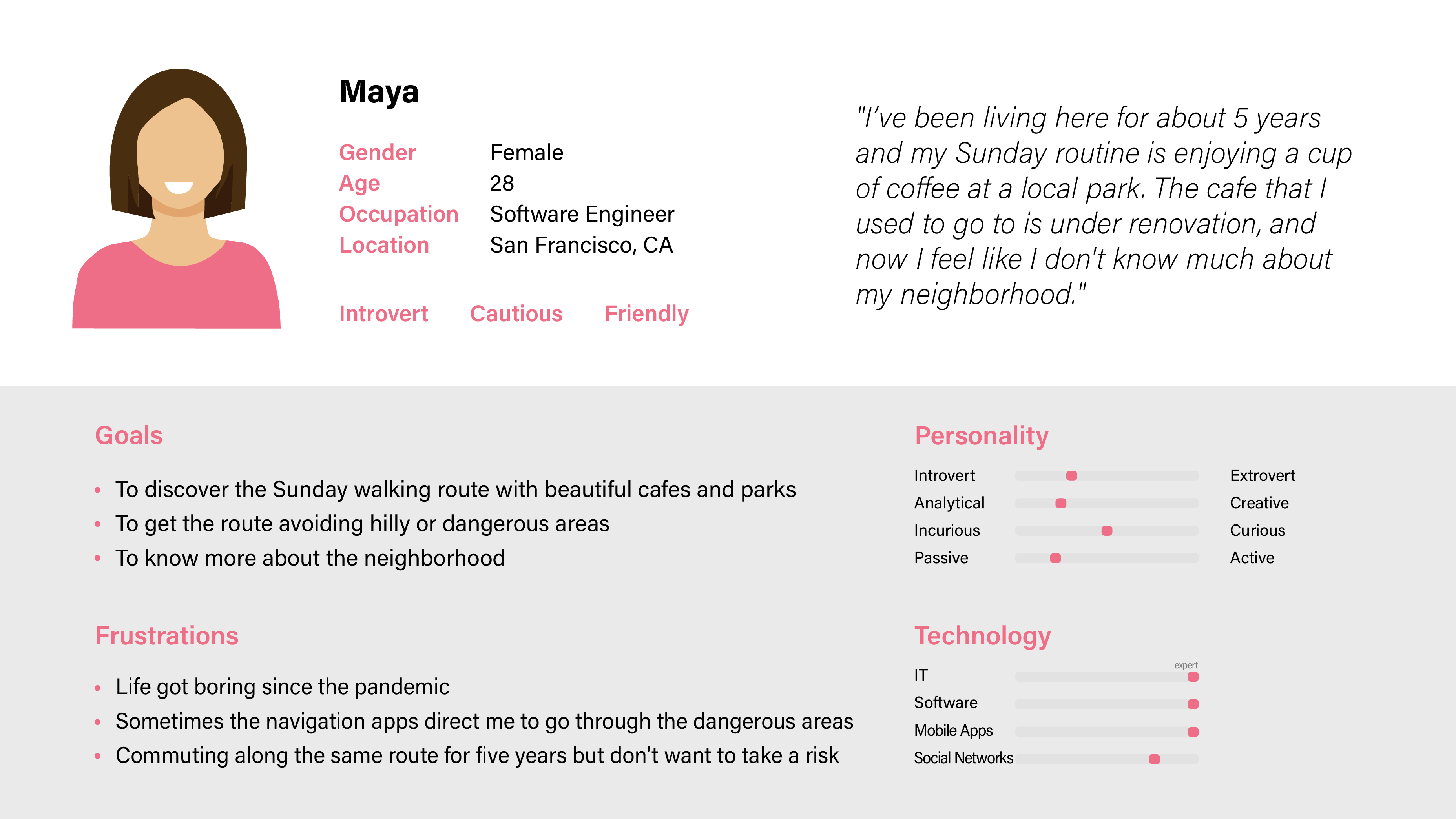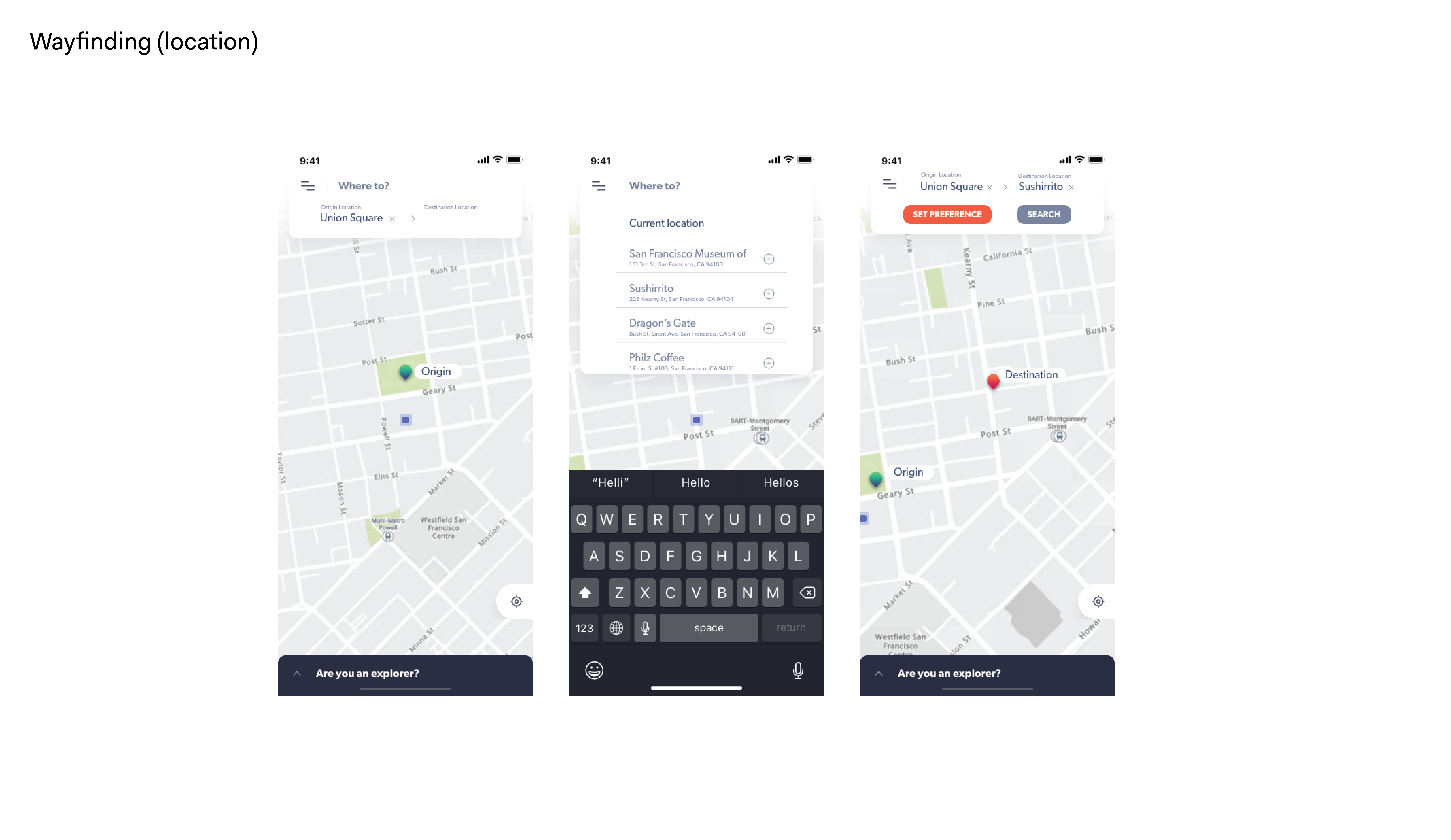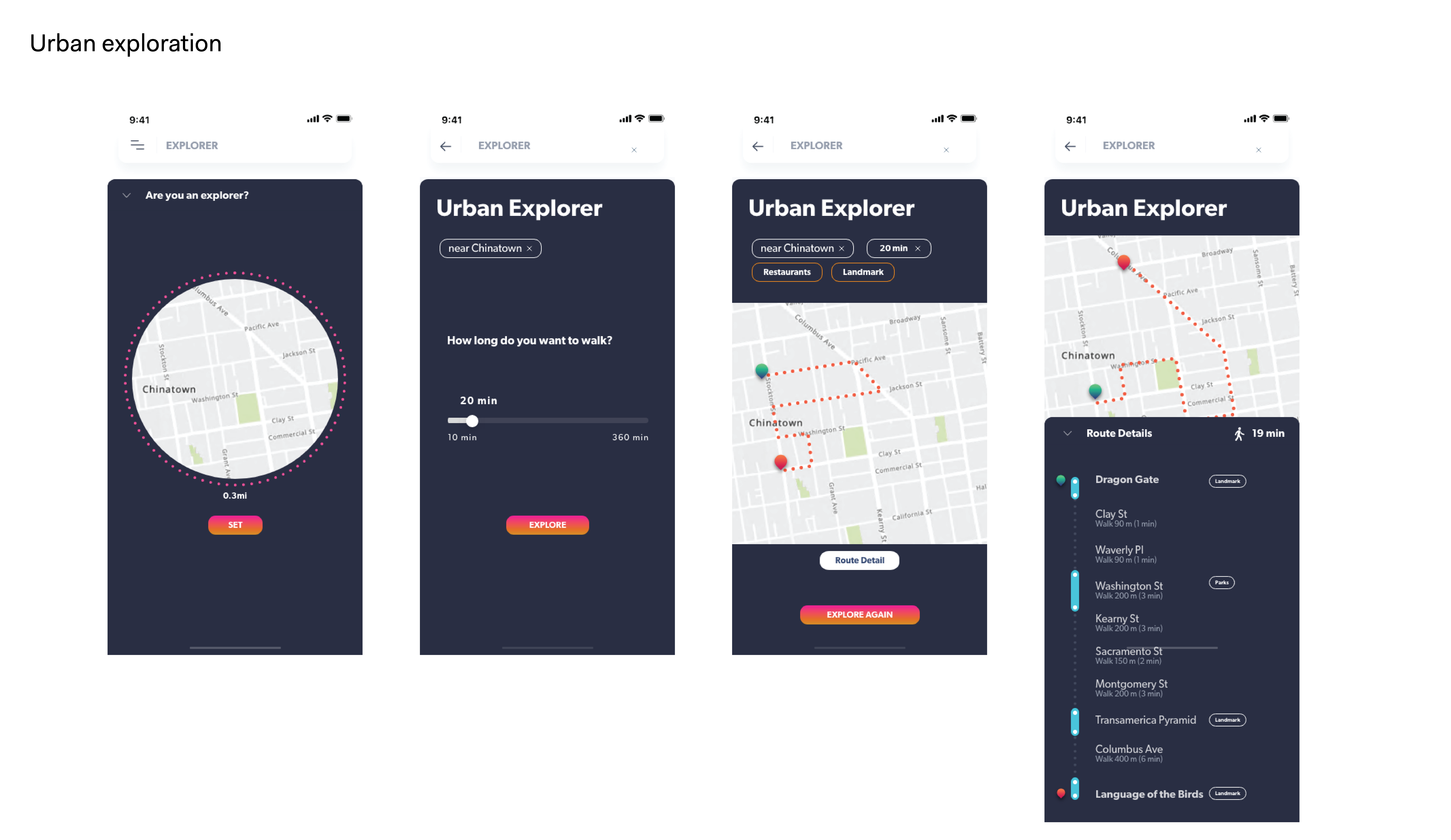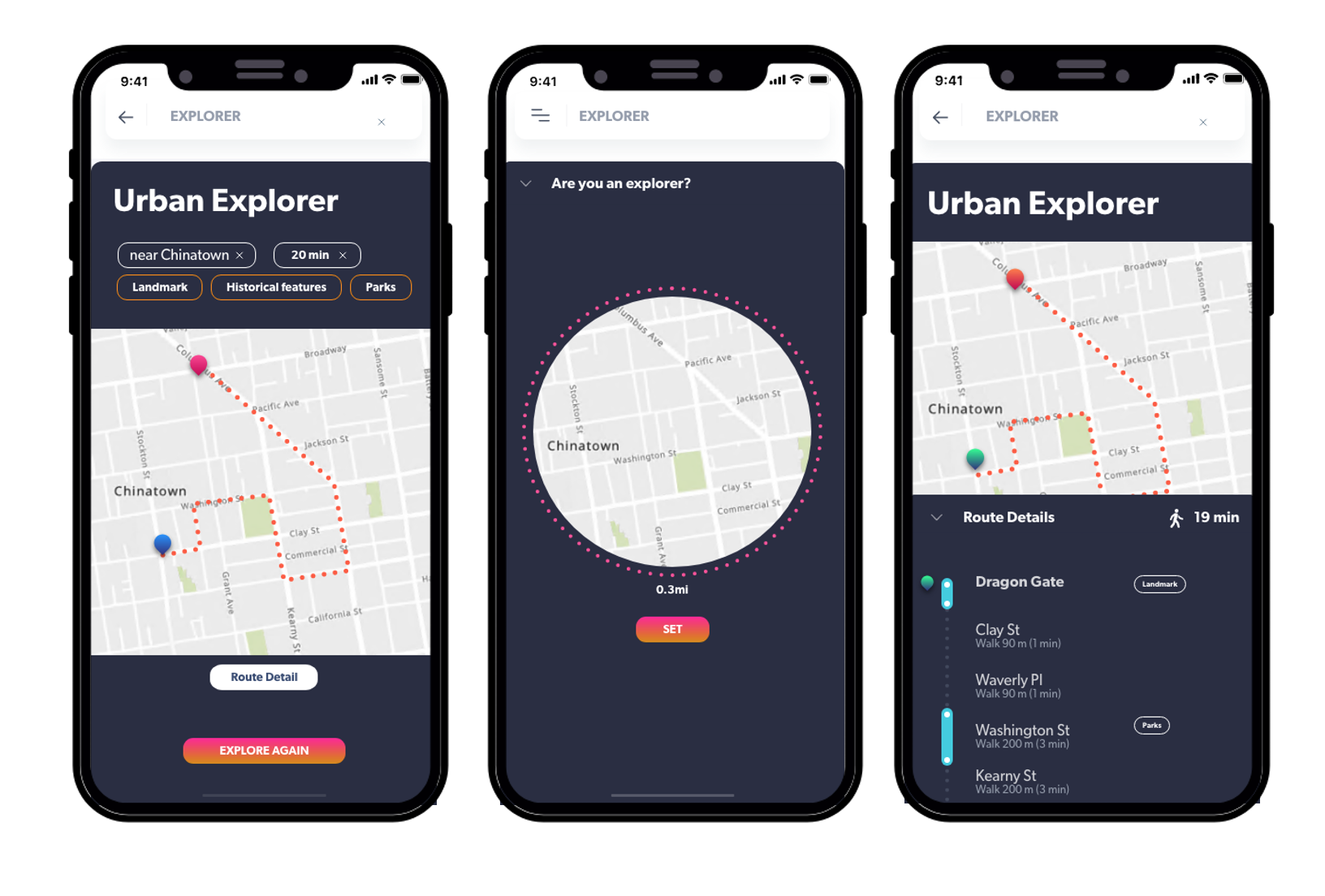#UrbanResearch #Thesis #InteractionDesign #UX
Journey as Destination (Product)
; route choice improvement by measuring pedestrian experience
Harvard Graduate School of Design | Thesis 2020
Instructor: Alex Krieger, Andres Sevtsuk
Tools: Adobe XD, Adobe Illustrator
︎ Prototype | ︎︎︎ Research Part
> How do we design a navigation system focusing on experience?

| Problem |
Current navigation systems only offer time-based information. However, many alternative routes have different characteristics but similar length, especially in the urban grids. And we may lose some chances to discover gems in our commute routes, only following the shortest route.
| Goal |
The suggested routes help people to discover alternative routes based on their preferences. It not just improves pedestrians experience but also encourages them to step out of their comfort zones and explore.
>>
The users get personalized route recommendations
by offering them alternatives based on their preferences.
This experience-centered approach will expose pedestrians to serendipity and unexpected enjoyment. No matter what they encounter on their journey, their encounters will make their lives more dynamic and exciting.
User Research


How it works
I borrowed Alexander Erath’s
choice model conducted in Singapore to calculate perceived distance. In this model, people perceive the distance
shorter or longer depends on the street attributes.

The
perceived distance is shorter than the actual one when it has more greenery.
Purpose of walking
The process
was set up to measure perceived distance with certain attributes and examined how this
newly adjusted distance effectively works to determine the most preferred route.
| Wayfinding |
If users have specific Origin-Destination points, they will likely use the Wayfinding option to get the best route option. The users first set the origin, destination point, and walking time and preferences; then, the computed route is returned.

| Urban Exploration |

Thus, this recommendation system serves not to narrow
down their choices but to expand their options to any exploratory experience without an
efficiency-centered operation.
Design



